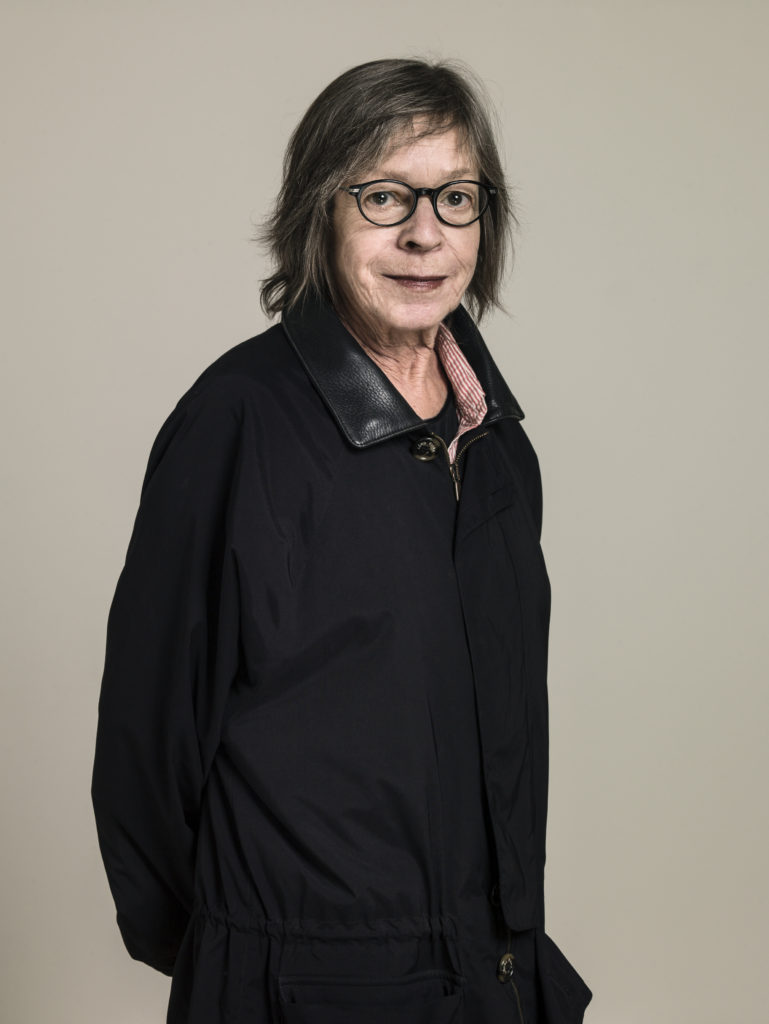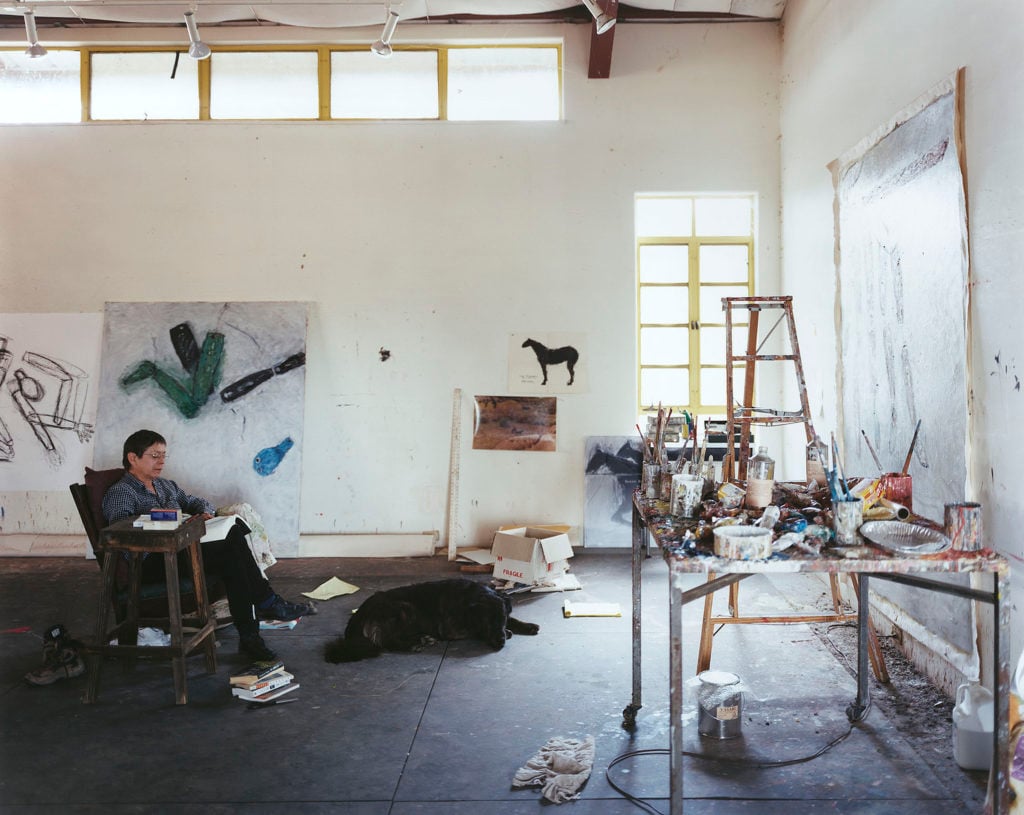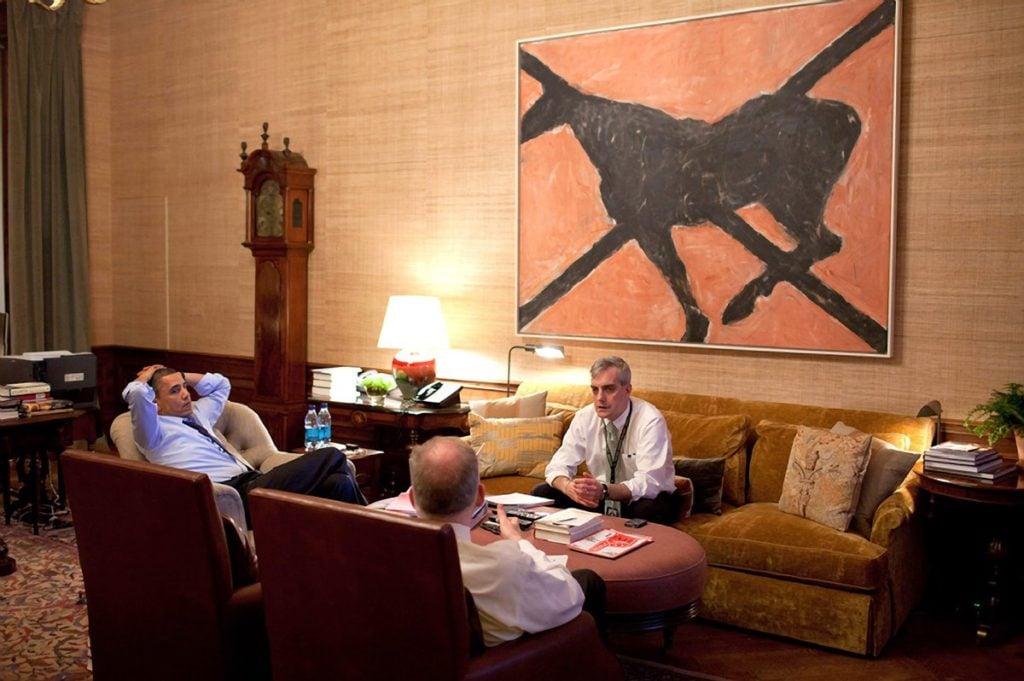People
Artist Susan Rothenberg, Who Painted Free-Roaming Horses in Defiance of Her Era’s Prohibition on Figurative Art, Has Died at 75
President Barack Obama had a work by Rothenberg on view in the White House.

President Barack Obama had a work by Rothenberg on view in the White House.

Artist Susan Rothenberg, known for her fearless embrace of figurative painting during a reign of abstraction, has died at the age of 75. Her passing was confirmed by her gallery, Sperone Westwater in New York.
“Since 1987, I have been privileged to show Susan Rothenberg’s work and to experience close-up her passion for and commitment to making art,” gallery cofounder Angela Westwater said in a statement. “As a pioneer, she extended the boundaries of painting—especially for other women artists.”
Rothenberg was born in 1945, in Buffalo, New York, and graduated from Cornell University in Ithaca. She later studied at the Corcoran School of Art in Washington, DC, but dropped out after two weeks and moved to New York in 1969. Her big breakthrough came in 1973, with a simple sketch of a horse.
“I had been doing abstract paintings, using a central dividing line so as to keep the painting on the surface and call attention to the canvas,” Rothenberg told New York magazine in 1976. “The horse was just something that happened on both sides of my line. The image held the space and the line kept the picture flat.”

Susan Rothenberg. Photo by Jason Schmidt, courtesy of Sperone Westwater, New York.
Two years later, she had her first solo exhibition at 112 Greene Street, an alternative art space, in New York. Along with artists including Jennifer Bartlett, Neil Jenney, and Denise Green, Rothenberg became part of a group known as the New Image artists, helping spark a resurgence in figurative painting.
Her work, New York Times journalist Grace Glueck declared in 1984, “was immediately seen as an important departure from the austerely reductive painting of the time, later fixing her as a key figure in the transition from the Minimal to the Expressionist generation.”
President Barack Obama had a work by Rothenberg on view in the White House, and was a personal collector of her art, according to Sperone Westwater.
Although Rothenberg remains best-known for her horse pictures, the horse motif ceased to be a dominant aspect of her work after 1980.

President Obama meets with national security aides John Brennan and Denis McDonough in front of Susan Rothenberg’s Butterfly, from the collection of the National Gallery of Art. Photo by Pete Souza for the White House.
Rothenberg represented the US at the 1980 Venice Biennale, and was also included in the 2007 edition of the show, as well as in Documenta 9 in 1992. A traveling museum survey of her work opened at the Museum of Modern Art Fort Worth in Texas in 2009.
Other key moments in Rothenberg’s career included her inclusion in group shows such as “New Image Painting” at the Whitney Museum of American Art in 1978 and “Zeitgeist” at the Martin-Gropius-Bau in Berlin in 1982. In Berlin, she was the sole woman among 45 artists.
The artist’s first marriage, to Canadian sculptor George Trakas, ended in divorce in 1979. Their daughter, Maggie, was born in 1972. Rothenberg married artist Bruce Nauman in 1989, and moved to New Mexico, where he already lived, the following year. Her later work was inspired by the desert landscape and its animals.
Among the institutions that collected Rothenberg’s work are the Albright-Knox Art Gallery in her native Buffalo; the Hirshhorn Museum and Sculpture Garden, in Washington, DC; the Los Angeles County Museum of Art; and the Metropolitan Museum of Art in New York.